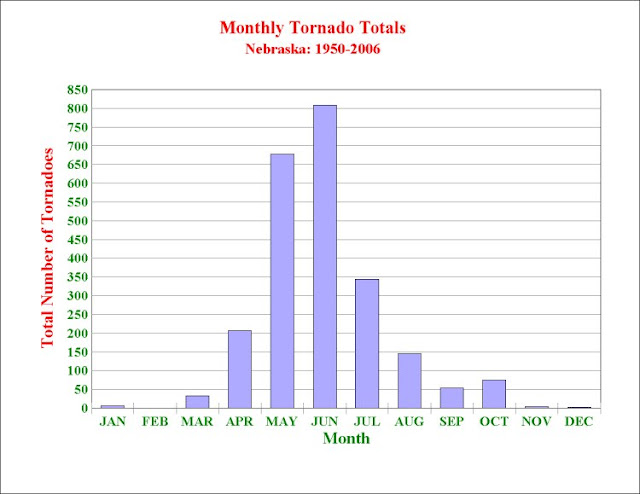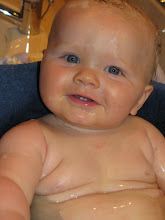Hurricanes
A Hurricane is a "large cyclonic tropical storm...generated by intense solar heating over large bodies of warm water." Hurricanes are "more sporadic, more dramatic, and locally more destructive in the Southern Coastlands than elsewhere in North America." Recently we witnessed the sheer devastation one of these gnarly storms is capable of unleashing when Hurricane Katrina, a category 5 hurricane "extending more than 1000 miles in diameter and exhibiting winds up to 175 mph," made landfall in Louisiana on August 29th, 2005.
Category 5--Hurricane Katrina
Katrina was not of course the first hurricane to devastate the Southern Coastlands nor has it been the last. Below are some of the worst hurricanes in the past 10 years from: http://www.theforumsite.com/forum/post/276296
Hurricane Gordon--One of the most erratic moving hurricanes, and still one of the most deadly in the last 20 years. Starting out in the Western Caribbean off the coast of Honduras and Nicaragua, Gordon weaved his way through the Caribbean and Florida before making its first landfall along the Outer Banks of North Carolina. It then turned southwestward again, and moved over Florida, where it finally dissipated. The storm left some $400 million dollars in damage, and 1145 people dead in November, 1994.
Hurricane Erin--Was one of a number of tropical storms and hurricanes in 1995. It actually made two landfalls over Florida. The first occurred on August 2nd at Vero Beach, and the second a few days later over Pensacola as a strong Category One Hurricane with 90 mph winds. Rain from this system was felt as far north as Illinois, and the storm caused some $700 million dollars in damage.
Hurricane Luis--One of the most powerful hurricanes of the 19 storms from the 1995 Season. Pummeled the Leeward Islands as well as parts of Puerto Rico and the Virgin Islands with 150 mph winds before turning out to sea in September, 1995. Caused approximately $2.5 billion dollars in damage and killed 17 people.
Hurricane Marilyn--Formed on the heels of Hurricane Luis in the Western Atlantic back in September, 1995, and brought Category Three Hurricane force winds to parts of the Leeward Islands and the Virgin Islands before turning out to sea. Caused approximately $1.5 billion dollars in damage, and left 8 people dead.
Hurricane Opal--This late season storm rapidly developed into a very strong Category Four Hurricane before weakening to a strong Category Three Hurricane when it came ashore near Pensacola, Florida in October, 1995. Opal ranks fifth all time in terms of damage with an estimated $3 billion dollars.
Hurricane Roxanne--Formed in the Bay of Campeche region of Mexico in the weeks following Hurricane Opal's landfall near Panama City, Florida. The storm was a Category Three Hurricane with sustained winds of 115 mph, and a minimum central pressure of 28.23 inches of Hg. The storm left 14 people dead and some $1.5 billion dollars in damage.
Hurricane Bertha--The earliest hurricane to form in the Eastern Atlantic. Developed just West of the Cape Verde islands in the last week of June, 1996, and made landfall as a Category Two Hurricane over Wilimngton, North Carolina on July 12, 1996. Killed 12 people, and caused some $275,000,000 dollars in damage.
Hurricane Fran--The most powerful hurricane to make landfall in the United States during the 1996 Hurricane Season. Made landfall over North Carolina with 115 mph winds in September of that year, and caused some $3.2 billion dollars in damage at the time. Damage estimates are even higher today.
Hurricane Hortense--Was a hurricane that formed during the Labor Day Weekend of the 1996 Hurricane Season. While the storm didn't make landfall in the United States, it ravaged parts of the Caribbean including Puerto Rico with torrential rains. Damage estimates from this storm is approximately $500 million dollars. After that, it grew in strength to a Category Four Hurricane.
Hurricane Georges--A Classic Cape Verde Hurricane that formed in September, 1998, Georges ripped through the Leeward Islands and Caribbean with as high as 150 mph winds. It then hit the Florida Keys before making landfall in Mississippi. Left 602 people dead, and caused about $5.9 billion dollars in damage.
Tornadoes, Blizzards, Lightning Storms, Hail and Thunder!!!!
Hurricanes are rare in extremely rare in Nebraska, unless we're talking about football and fending off the Miami Hurricanes! However, Nebraska has its share of pretty scary weather!
This awesome clip shows footage taken of a Tornado on June 17,2009 in Aurora, Nebraska.
Tornadoes are pretty common in Nebraska, especially during the warm summer months as this graph below shows:
Tornadoes can form rather quickly and without warning which can be pretty scary if you happen to be traveling along theinterstate in a rural part of Nebraska, which is of course most of the state.It can be difficult to find a safe place to take shelter. While I was living in Cozad they closed the doors of a Walmart in the next town over, keeping shoppers inside until the tornado had passed.
NEBRASKA
* Nebraska averages over 40 tornadoes a year
(see: Nebraska Tornado Data Table
* Nebraska's most number of tornadoes was 110 in 2004
* Nebraska's peak month for tornadoes is June.
* May and June account for 63% of all of our tornadoes.
* May, June and July account for 78% of all of our tornadoes.
* There have been 115 Nebraska tornado fatalities since 1916.
* Every decade in the 1900's had tornado fatalities, but not the 1990's!
* There were no tornado fatalities in Nebraska from 1987 until June 2003 when two occurred.
* ALL 93 Nebraska counties have been visited by tornadoes since 1950.
* Hall County's tornado density is 4 times greater than the state average and
3 times greater than the average for the Omaha and Lincoln areas.
* Most tornadoes from one storm, 7 in Grand Island, June 3, 1980.
* Nebraska has had reported tornadoes in every month but February.
* Omaha May May 5, 1975 and Grand Island June 3, 1980 are ranked 2nd &
9th in U.S. top 10 most costly tornadoes.
* Over 50% of our tornadoes occur between 4 PM and 8 PM.
* Nebraska had its first confirmed tornado between 8 AM and 9 AM in Nebraska in Year 2001.
* Nebraska is ranked 5th in the U.S. for total number of tornadoes.
* Nebraska is ranked 23rd for number of tornado fatalities and 24th for number of tornado injuries.
* May 2006 was the first May in recorded history to NOT have any reported tornadoes.
The informative bar graphs and the tornado statistics come from the University of Nebraska: http://www.hprcc.unl.edu/nebraska/NEBTORNADOFACTS.html
This photograph is from the devastating blizzard of 1948-49. Nebraska has had some cold, snowy winters but this was definitely one of the worst. Northeastern Nebraska was hit with more than 24 inches of snow. The snow barely had any time to melt before more fell. Icy winds 50-60 miles per hour were driving the snow.
One area of Nebraska, Antelope County, had 30ft snow drifts that did not melt until June!! Many areas of the state received over 100 inches of snowfall during the blizzard.













































